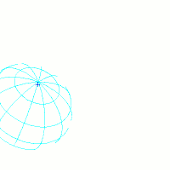ESA Science & Technology - Science Results
Science Results
Science Results
Astronomers have uncovered one of the biggest supermassive black holes, with the mass of 17 billion Suns, in an unlikely place: the centre of a galaxy that lies in a quiet backwater of the Universe.
Published: 6 April 2016
Decades of searching in the Milky Way's nearby 'twin' galaxy Andromeda have finally paid off, with the discovery of an elusive breed of stellar corpse, a neutron star, by ESA's XMM-Newton space telescope.
Published: 31 March 2016
Following the discovery of gravitational waves from the merging of two black holes, ESA's INTEGRAL satellite has revealed no simultaneous gamma rays, just as models predict.
Published: 30 March 2016
Astronomers using the unique ultraviolet capabilities of the NASA/ESA Hubble Space Telescope have identified nine monster stars with masses over 100 times the mass of the Sun in the star cluster R136. This makes it the largest sample of very massive stars identified to date.
Published: 17 March 2016
ESA's Rosetta spacecraft has revealed a surprisingly large region around its host comet devoid of any magnetic field.
Published: 11 March 2016
By pushing the NASA/ESA Hubble Space Telescope to its limits astronomers have shattered the cosmic distance record by measuring the distance to the most remote galaxy ever seen in the Universe.
Published: 3 March 2016
For the first time astronomers were able to analyse the atmosphere of an exoplanet in the class known as super-Earths. Using data gathered with the NASA/ESA Hubble Space Telescope and new analysis techniques, the exoplanet 55 Cancri e is revealed to have a dry atmosphere without any indications of water vapour.
Published: 16 February 2016
ESA is thrilled to learn that gravitational waves have been detected, and is looking forward to starting its mission to test technologies that could extend the study of these exotic waves to space.
Published: 11 February 2016
There are no large caverns inside Comet 67P/Churyumov-Gerasimenko. ESA's Rosetta mission has made measurements that clearly demonstrate this, solving a long-standing mystery.
Published: 4 February 2016
Normally busy with observing high-energy black holes, supernovas and neutron stars, ESA's INTEGRAL space observatory recently had the chance to look back at our own planet's aurora.
Published: 26 January 2016
ESA's XMM-Newton has found a wind of high-speed gas streaming from the centre of a bright spiral galaxy like our own that may be reducing its ability to produce new stars.
Published: 14 January 2016
Observations made shortly after Rosetta's arrival at its target comet in 2014 have provided definitive confirmation of the presence of water ice.
Published: 13 January 2016
The NASA/ESA Hubble Space Telescope has captured the image of the first-ever predicted supernova explosion. The reappearance of the Refsdal supernova was calculated from different models of the galaxy cluster whose immense gravity is warping the supernova's light.
Published: 16 December 2015
The first papers from the XXL survey, carried out with ESA's XMM-Newton X-ray observatory, are published in a special issue of Astronomy and Astrophysics today. This is the largest XMM-Newton survey of galaxy clusters ever undertaken and the first results reveal the enormous potential of this survey.
Published: 15 December 2015
Astronomers have used the NASA/ESA Hubble Space Telescope and the NASA Spitzer Space Telescope to study the atmospheres of ten hot, Jupiter-sized exoplanets in detail, the largest number of such planets ever studied.
Published: 14 December 2015
Scientists have developed a technique to use quasars – powerful sources driven by supermassive black holes at the centre of galaxies – to study the Universe's history and composition. This approach promises to become an important tool to constrain the properties of our Universe.
Published: 3 December 2015
ESA's XMM-Newton X-ray observatory has revealed three massive filaments of hot gas flowing towards a cluster of galaxies, uncovering a portion of the cosmic skeleton that pervades the entire Universe.
Published: 2 December 2015
Astronomers have used modern techniques to visualise data from ESA's Hipparcos space astrometry mission in three dimensions.
Published: 16 November 2015
Located 1.5 million km from the Earth, ESA's Gaia spacecraft is scanning the sky to conduct the most detailed census of stars in our Galaxy. However, on 6 November, it will be perfectly placed to witness a rare event that will involve objects much closer to home – a lunar transit across the Sun.
Published: 5 November 2015
By comparing radar images of areas on Titan to those of Earth's deserts, scientists have identified two distinct types of sand dune on Saturn's largest moon – and discovered eroded structures that indicate that Titan's climate may have once been very different.
Published: 5 November 2015
—
20 Items per Page




















